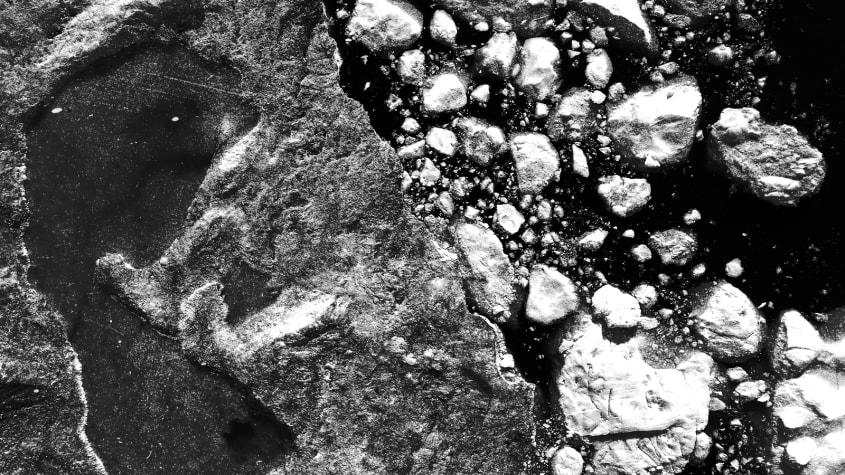'Zombie ice' is real — and it's as spooky as it sounds

"Zombie ice" might sound like a concept out of a 1950s B movie, but it's a real thing — and it's dangerous. Scientists said this week that zombie ice from Greenland's melting ice sheet will raise global sea levels by an average of 10 inches.
Climate change is the culprit, of course. And the impact of that melting ice will be unexpectedly huge.
"The unavoidable 10 inches in the study is more than twice as much sea level rise as scientists had previously expected from the melting of Greenland's ice sheet," The Associated Press reports. A 2021 report from the Intergovernmental Panel on Climate Change, for example, had previously estimated that Greenland would be responsible for up to five inches of rising water globally. Can anything be done about the attack of the zombie ice? Here's everything you need to know:
What is zombie ice?
"It's dead ice. It's just going to melt and disappear from the ice sheet," said William Colgan, a glaciologist who co-authored the new study. Here's how that works: In the pre-climate change times, snowfall in Greenland was expected to refresh and thicken the sides of the country's glaciers, AP reports. "But in the last few decades, there's less replenishment and more melting, creating imbalance." The so-called "zombie ice" is ice that still exists but is "no longer getting replenished by parent glaciers now receiving less snow." And soon enough, much of it will simply melt.
Of course, it's not news that Greenland's ice sheet — the second-biggest in the world, after Antarctica — is melting quickly. Scientists from Ohio State University in 2020 reported that the country's snowfall was no longer keeping up with the ice melt — which meant that the ice sheet would keep melting even if global temperatures stopped rising, or even started to cool. That latter scenario obviously hasn't happened. Continued rising temperatures mean that glaciers are now sitting in pools of ever deeper water that accelerate their melting process: "Warm ocean water melts glacier ice," the Ohio State scientists said, "and also makes it difficult for the glaciers to grow back to their previous positions."
Long story short? The Greenland ice sheet has long since passed "the point of no return."
What effects will a rising ocean have?
"Sea level rise poses a serious threat to coastal life around the world," National Geographic says in an explainer on the topic. The ramifications will include intense storm surges, flooding, and damage to wildlife habitats across the coasts. And this isn't just a future problem: In Florida, for example, ocean levels are eight inches higher than they were in 1950. That creates all kinds of issues. Drinking water is threatened because the rising seas have "allowed saltwater to intrude into the drinking water and compromised sewage plants," says SeaLevelRise.org, and "there are already 120,000 properties at risk from frequent tidal flooding in Florida." That forces property owners to retreat from the coasts — unless state and federal governments spend billions on infrastructure projects designed to keep the seawater at bay.
But it's not just homeowners who will suffer. More than 40 percent of the U.S. population — 133 million people as of 2013 — lives and works along the American coasts, according to the National Academies of Sciences, Engineering and Medicine. That's just America. Globally, "some of the latest estimates suggest that as many as 630 million people may live on land below projected annual flood levels by the end of the century," The Conversation reported in 2020.
Is there any way to stop this?
Not really. A lot of the damage has already been done. The Associated Press points out that the new study predicts that 3.3 of Greenland's ice sheet will melt "no matter what" even if everybody in the world started driving electric cars tomorrow. And the study only estimates the effects of Greenland's ice melt — it doesn't include the likely effects of climate change in Antarctica and other ice-bound environments.
This is usually the part of the story where we're supposed to offer a little hope, but the researchers don't have much to supply. "Even if the whole world stopped burning fossil fuels today, the Greenland Ice Sheet would still lose about 110 trillion tons of ice," say the study's authors, researchers at the Geological Survey of Denmark and Greenland. Even scarier, they say their estimate of a 10-inch sea rise from Greenland's ice sheets "is a very conservative rock-bottom minimum."
"Realistically," said Jason Box, one of the co-authors, "we will see this figure more than double within this century."
You may also like
Secret Service official who worked in Trump White House retires 2 days before Jan. 6 interview
Chris Rock says he turned down offer to host 2023 Oscars after Will Smith slap

